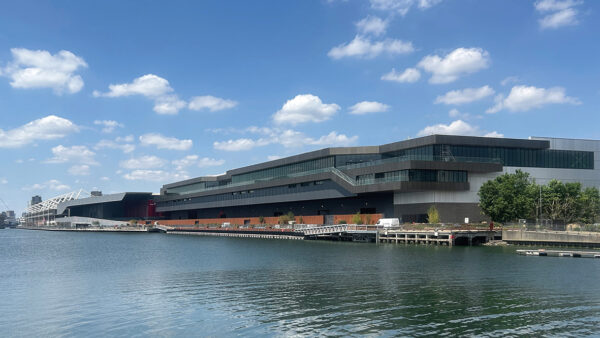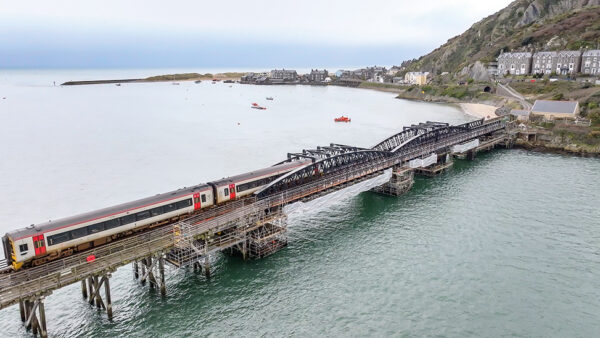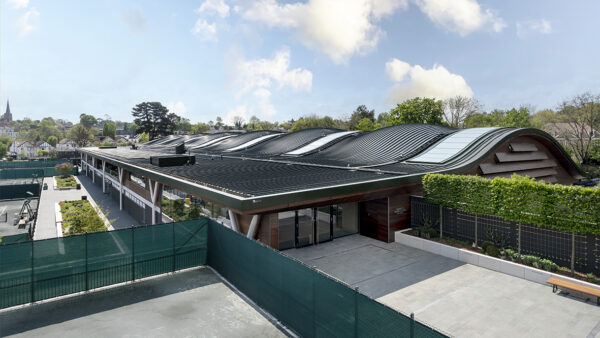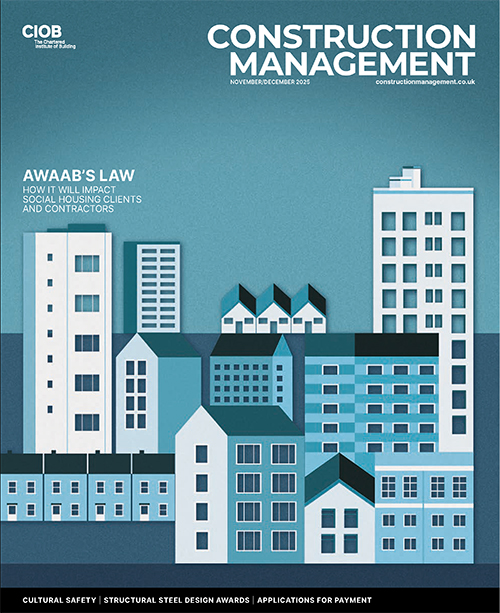
New biodiversity net gain rules have come in for sites under a hectare in size. Tara Garraty explains the implications for developers.
Biodiversity net gain (BNG) is a framework that ensures any new development contributes positively to biodiversity and is a crucial part of the government’s strategy for environmental sustainability.
The goal is to leave the environment in a better state post-development than it was before. Developers are required to assess the biodiversity value of a site before and after development, with a target of achieving a minimum 10% net gain in biodiversity. Traditionally applied to larger projects, from April 2024 BNG now extends to smaller sites as well, following an update from the Department for Environment, Food & Rural Affairs (Defra).
Historically, BNG was a requirement primarily for larger developments. However, with the new regulation, small developments – defined as those under a hectare in size or involving fewer than nine dwellings – are now also subject to BNG rules. This expansion recognises that cumulative impacts from smaller projects can significantly affect local biodiversity.
To aid in the assessment of these smaller projects, Defra introduced the small sites metric (SSM) calculation tool, a simplified tool adapted from the existing statutory biodiversity metric calculation tool, to help measure the biodiversity value of smaller sites, making it easier for developers to meet the BNG requirements.
The metric considers factors such as habitat quality and area, guiding developers on how to achieve the mandatory 10% biodiversity net gain.
Implementing BNG on small sites
Tunley Environmental has already worked on small developments projects to achieve BNG and clear the planning hurdle, as demonstrated at Leicester College (see box).
Here are four key steps to follow when implementing BNG on small developments.
1. Baseline assessment. Start by evaluating the existing biodiversity of the site using the small sites metric. This involves identifying and quantifying the types and quality
of habitats present.
2. Design and plan. Develop a plan that outlines how the project will achieve at least a 10% net gain in biodiversity. This could include enhancing existing habitats, creating new ones or improving habitat connectivity.
3. Implementation. Carry out the planned biodiversity enhancements during the construction phase and ensure ongoing management to maintain the biodiversity gains.
4. Monitoring and reporting.Regularly monitor the outcomes and report on the biodiversity improvements to relevant authorities.
Implications and future updates
The extension of BNG requirements to small sites marks a significant step in the UK’s biodiversity conservation efforts. Traditional metrics and frameworks often overlook these sites, despite their collective impact on local biodiversity. Developers, planners and landowners must now integrate biodiversity considerations into all scales of development projects to align with legal requirements and support global environmental and sustainability goals.
As the understanding of biodiversity and ecosystem services deepens, the metrics and tools used to assess biodiversity impacts will likely keep evolving. These could include more nuanced metrics that consider ecological connectivity and specific landscape. And, as enforcement mechanisms strengthen, developers may face more rigorous scrutiny to ensure compliance with BNG targets.
New developments will increasingly focus on innovative design and the integration of green infrastructure, even on small sites. By prioritising nature-inclusive solutions, developers can contribute to larger ecological networks, enhancing habitat connectivity and resilience in the face of climate change. This approach will be crucial in meeting environmental goals and regulatory requirements in the years ahead. l
Tara Garraty is a biodiversity specialist and sustainability scientist with Tunley Environmental.
Case study: Leicester College
New facility achieves biodiversity net gain of 21.1%
Tunley Environmental conducted an independent small-site BNG assessment on a project at Leicester College to identify and quantify the biodiversity of the site before and after development.
The college was planning to build a new training facility at its Abbey Park Campus, working with Moss Architecture Interiors, and needed to provide evidence of 10% BNG post-development for planning permission.
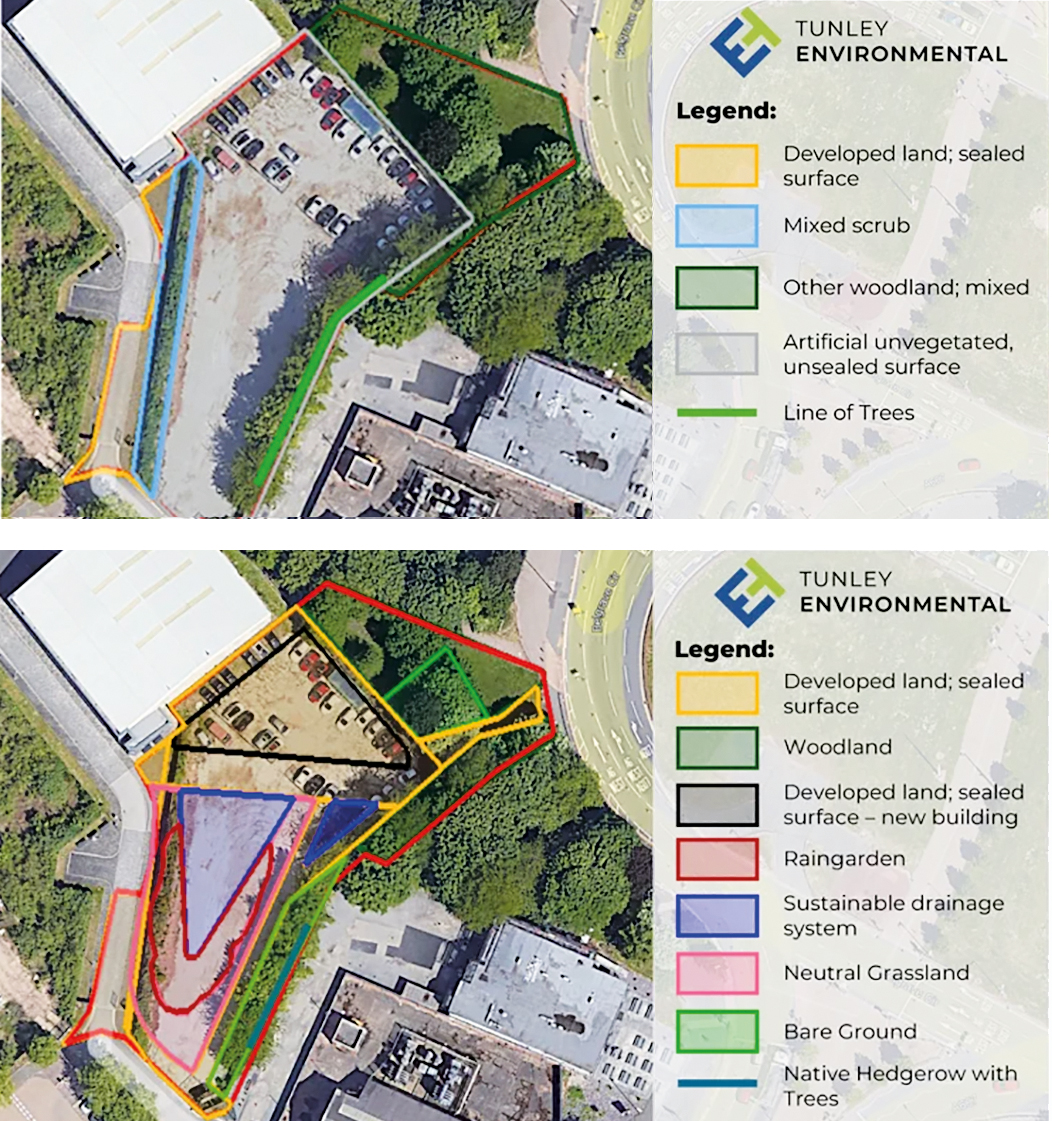
The proposed development retained 653 sq m of its 3,278 sq m area for habitats and includes the design and implementation of a sustainable drainage system which feeds into a rain garden, planting of individual trees and inclusion of a meadow mix to form neutral grassland. The development also enhanced the line of trees to a ‘native hedgerow with trees’ with medium distinctiveness.
The total biodiversity units post-development were 0.90 for ‘area habitats’ and 0.26 for ‘hedges and lines of trees’.
Overall, the BNG assessment showed a net gain in biodiversity, with a 21.1% increase in biodiversity units for area ‘habitats’ and a 16.8% increase in biodiversity units for ‘hedgerows’.




